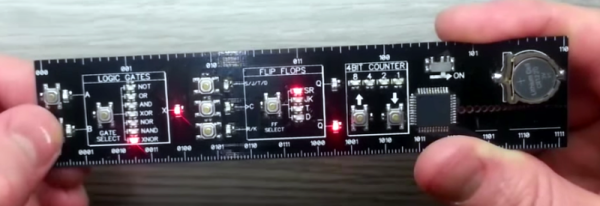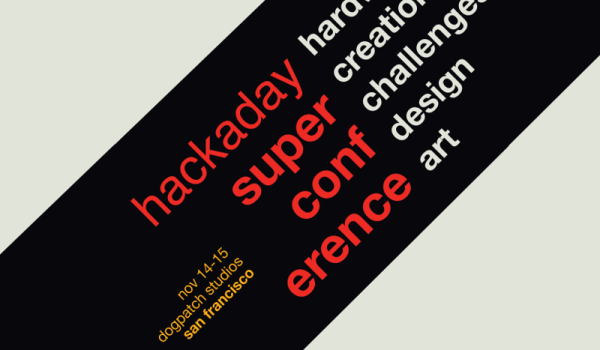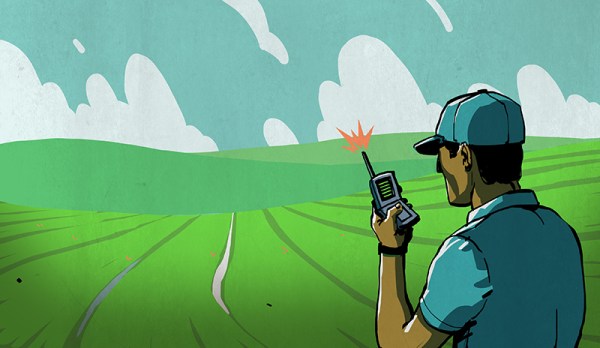Like [Brad], we’ve seen a number of PCB rulers out there. [Brad] was looking to take the idea and run with it. His DigiRule is a ruler with a logic gate simulator. What he built is a mash-up between PCB rulers, and the concept of electronic business cards.
All told it simulates seven logic gates, four flip-flops, and includes a four-bit counter. On one end of the ruler a CR1220 battery feeds the 18F43K20 which is performing the logic operations using buttons and LEDs. Of course the truth tables are printed on the back silk-screen, but playing with the lights is a lot more fun. We do find it fairly amusing that the centimeters on the bottom of the ruler are notated in binary.
It makes a lot more sense to hand out rulers than business cards; people might actually use them after you leave and you can still include contact info. This form-factor also breaks the mold. You can have a lot more space on a ruler and you’re not constrained by thickness (although [Limpkin] solved that problem). While we’re on the topic of business cards [ch00f’s] USB etch-a-sketch style card and this logic-based information delivery device top our favorites list.
Continue reading “Electronic Ruler Works Out Logic Truth Tables”






















